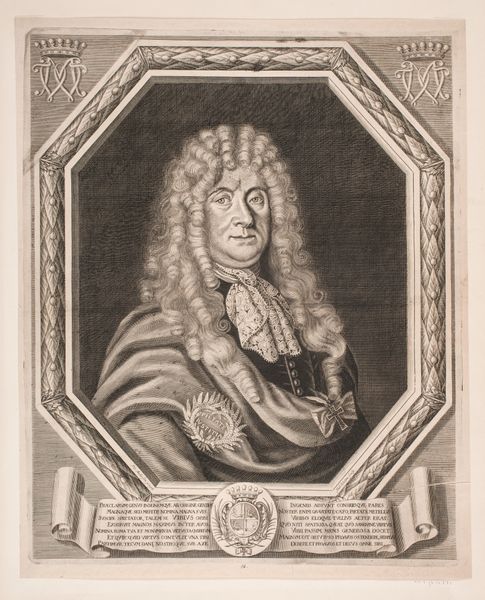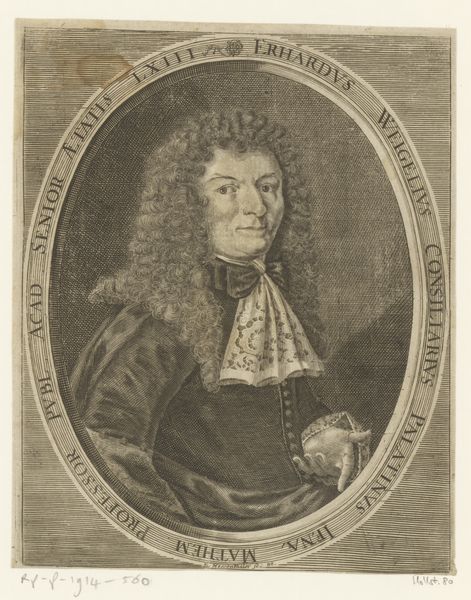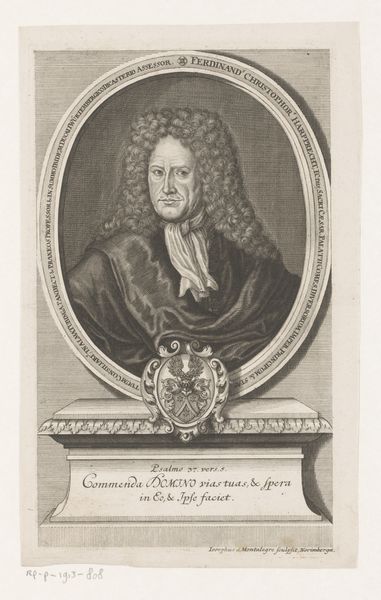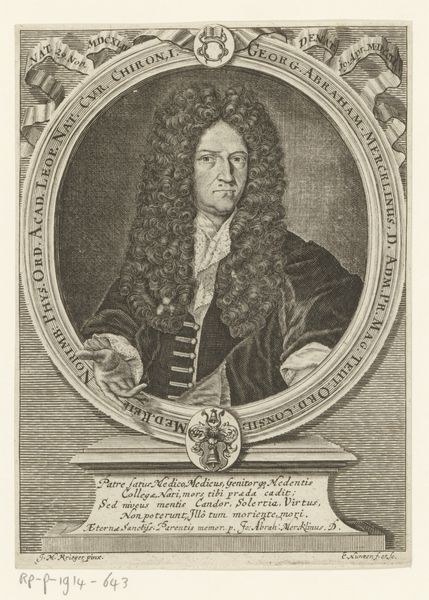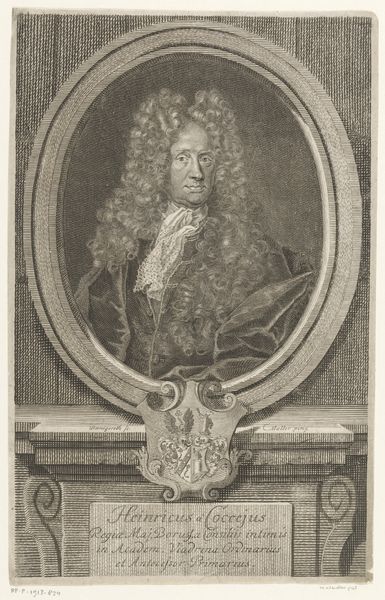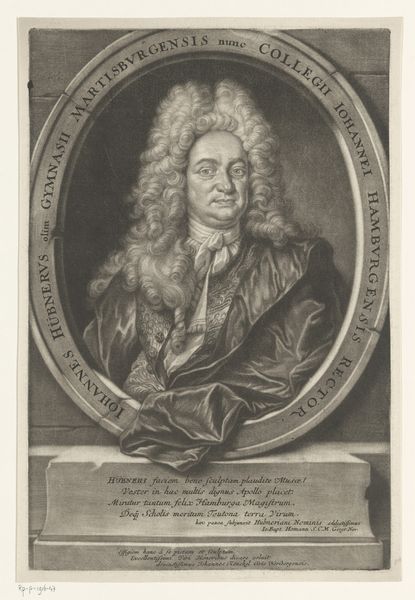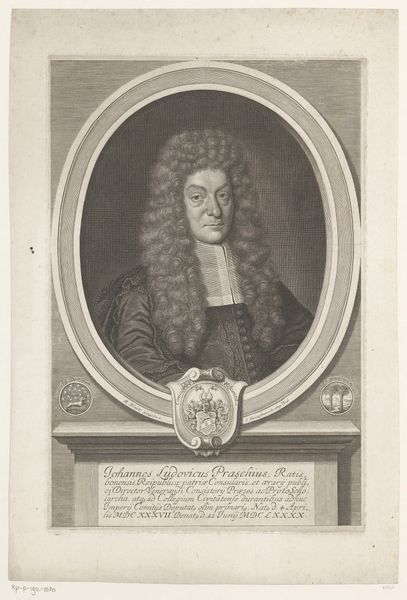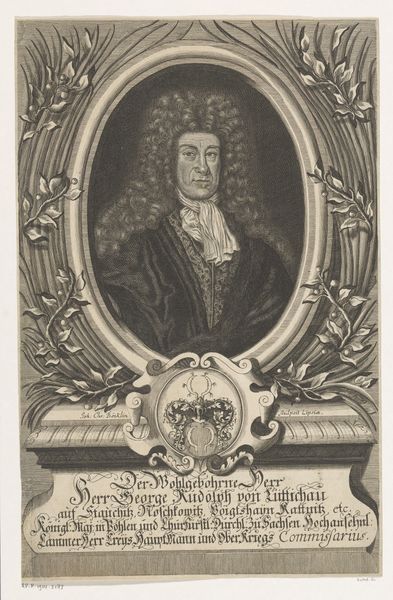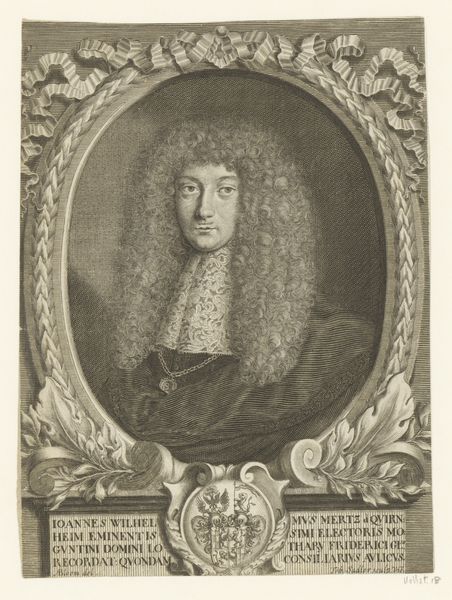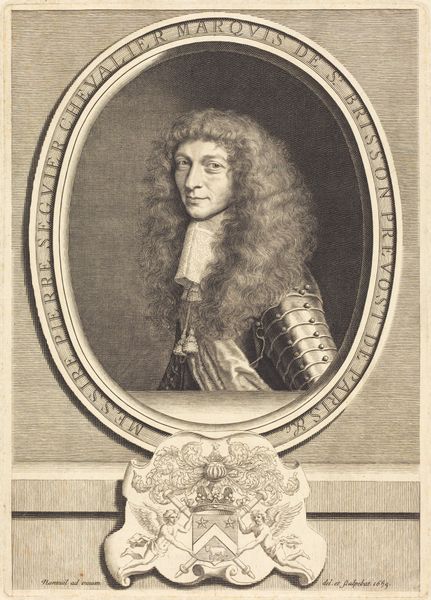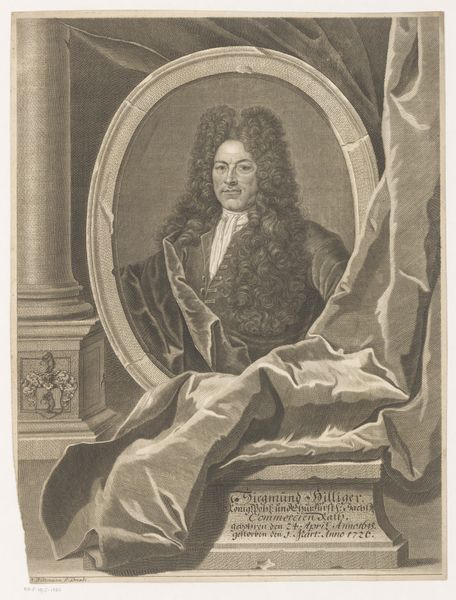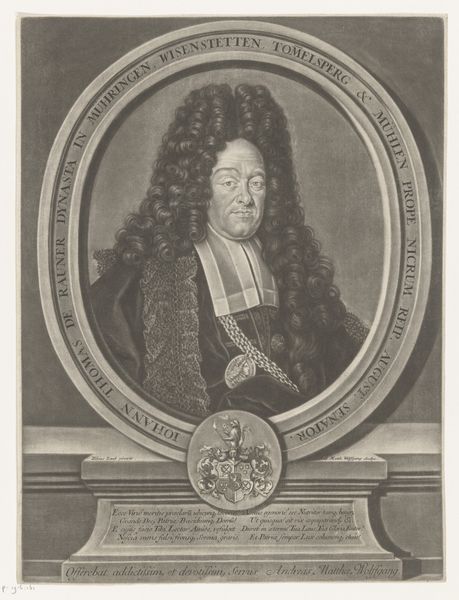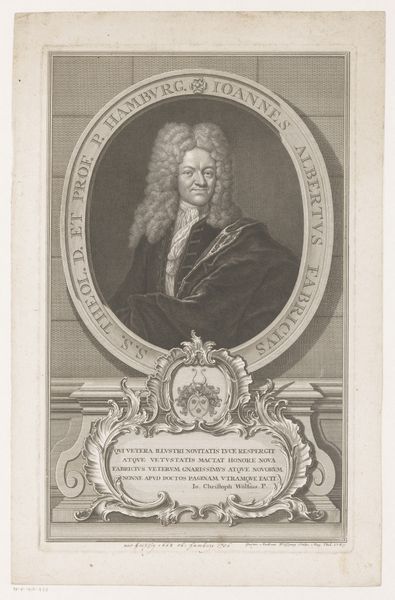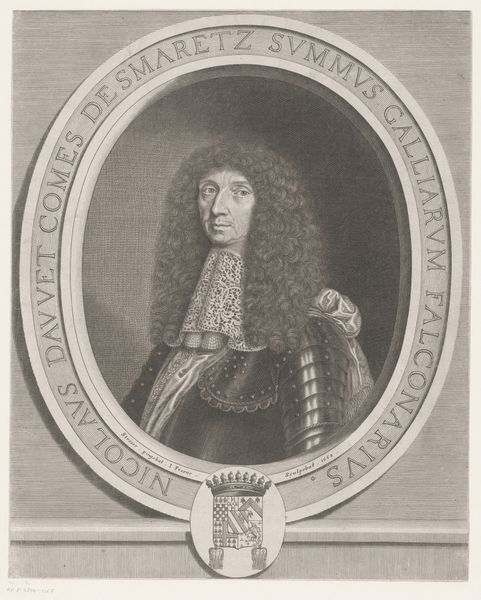
engraving
#
portrait
#
baroque
#
engraving
Dimensions: height 320 mm, width 202 mm
Copyright: Rijks Museum: Open Domain
Andreas Matthäus Wolfgang made this portrait of Sigismund Jacob Holtzschuher, likely in the early 18th century, through the meticulous technique of engraving. Look closely, and you’ll see how the material of the metal plate deeply influences the image. Wolfgang used tools to cut lines into the metal, creating grooves that would hold ink. The pressure of the printing press then transferred this ink onto paper. Consider the sheer labor involved in creating such fine details. The textures of Holtzschuher's elaborate wig and the delicate lace at his collar are all illusions conjured by thousands of tiny, precise cuts. This wasn't just a technical exercise, it was a social one, too. Printmaking like this was deeply embedded in the era's growing commercial culture. It allowed for the relatively inexpensive reproduction of images, and wider distribution of them, making portraits like these accessible to a broader audience than painted portraits ever could be. It democratized image-making and image consumption. So, next time you see an engraving, remember to think not just about the image itself, but also the labor, the materials, and the social context that brought it into being.
Comments
No comments
Be the first to comment and join the conversation on the ultimate creative platform.
